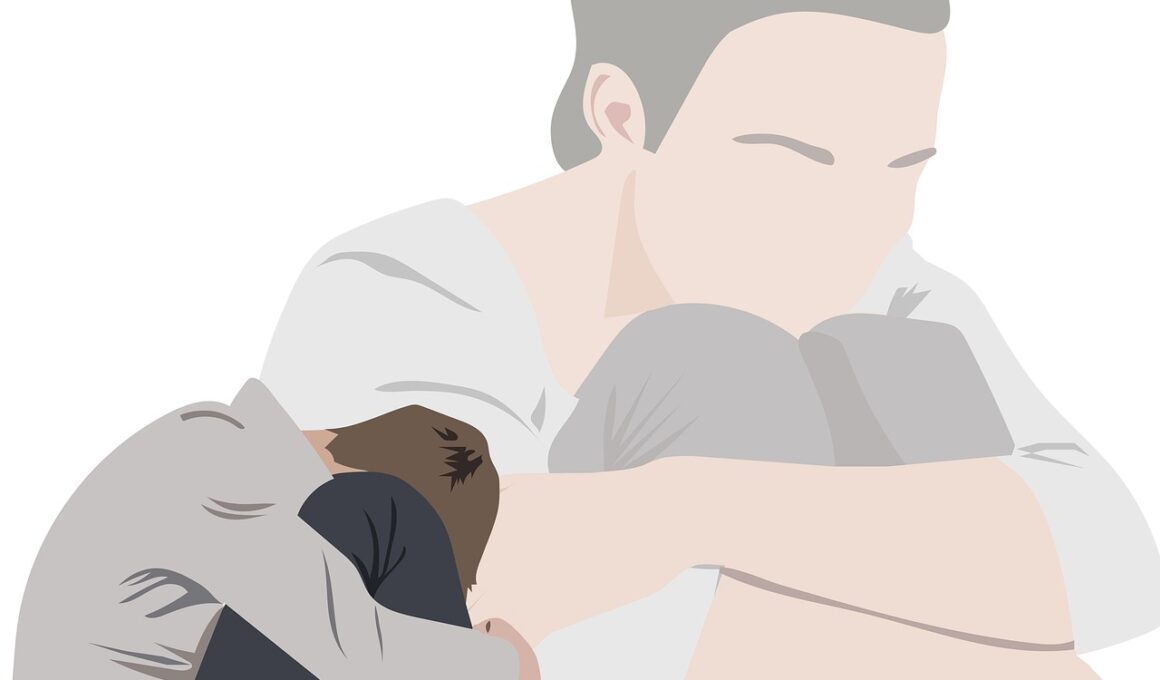Separation Anxiety in Dogs with Chronic Illnesses
Separation anxiety is a common behavioral disorder in dogs, particularly affecting those with chronic illnesses. Such dogs often experience more stress due to their health condition, which can exacerbate feelings of anxiety when left alone. Recognizing the signs of separation anxiety is critical to addressing the issue effectively. Symptoms may include excessive barking, destructive behavior, and inappropriate urination. Owners should take note of any changes in behavior when they anticipate going out, as this can provide insight into their dog’s emotional state. Implementing a consistent routine can help alleviate anxiety. By observing your dog’s triggers and maintaining a calming environment, you can make a significant difference. Furthermore, it’s beneficial to engage your dog in regular mental and physical exercises. These activities can help distract them from their anxious thoughts, providing relief when left alone. A strong bond with your dog enhances trust and security, which is essential for their well-being. If separation anxiety remains an issue, consulting with a veterinarian or behaviorist is recommended. They may suggest behavior modification techniques tailored specifically to your dog’s needs.
Chronic illnesses can worsen the symptoms of separation anxiety in dogs. These dogs often face challenges that make coping with solitude even more difficult. They may feel a heightened sense of vulnerability when their owners leave. This emotional strain manifests in various ways, from incessant whining to refusing to eat. It’s crucial for owners to understand that their dog’s anxiety is not merely a behavioral issue; it is often linked to their physical health. Providing a safe space for dogs, with familiar smells and sounds, can create a comforting atmosphere. This support will help reassure the dog when left alone. Creating a separation training program can also prove beneficial. Gradually increasing the amount of time a dog is left alone can foster independence and resilience. Tools like anxiety wraps or calming music can further ease transitions. If after these methods symptoms continue, medication may also be explored. Always consult your veterinarian prior to introducing any medications. They will be able to recommend solutions that cater to both emotional and physical conditions individual to your dog.
Environmental enrichment plays an important role in alleviating separation anxiety. This can include interactive toys that keep dogs engaged while their owners are away. Puzzle toys, for instance, require cognitive effort where they must manipulate objects to get to treats. Additionally, providing a comfortable and secure space with their bed and favorite items can ease anxiety during separation. Implementing a consistent routine can also help dogs feel more secure. By establishing specific times for walks, meals, and playtime, dogs learn to anticipate their owner’s return. This predictability can lessen anxiety significantly. Moreover, social interactions are vital; ensuring your dog has the opportunity to engage with other pets or people can improve their overall mental health. They benefit from companionship and stimulation when their owners are not present. Limitations on the amount of time a dog spends alone should also be considered. Leaving dogs alone for prolonged periods can increase anxiety and lead to behavioral issues. It’s essential to balance work commitments with the needs of your dog to ensure they feel supported and safe when alone.
Effect of Treatment
Finding the right treatment for dogs with separation anxiety and chronic illness is paramount. Medication may help manage symptoms and can be prescribed by a veterinarian. However, it should never be the sole intervention. Behavioral modification techniques are equally important and can foster long-term stability. Such programs may include counter-conditioning, where dogs are gradually exposed to separation while being rewarded for calm behavior. Training should be paired with positive reinforcement methods to encourage confidence. Additionally, creating a predictable environment can greatly aid in easing anxiety. For dogs with chronic illnesses, it is crucial that they receive tailored support. Collaborating with professionals can provide insights specific to your dog’s condition. Regular checkups with the vet should also be included to monitor physical health, which can influence behavior. Healthier dogs tend to cope better with being alone. Importantly, the owner’s mental state can affect the dog’s feelings of anxiety. If owners feel stressed, dogs may pick up on this energy and mirror it in their own behavior. Establishing a calm environment contributes to a better quality of life for your dog.
Training and desensitization are essential strategies for managing separation anxiety. It’s vital for an owner to methodically teach their dog that they will always return after their departures. This can take time and patience. Starting with short absences and gradually extending the duration can help. When leaving the house, try to remain calm and avoid dramatic farewells. Dogs are keen observers and may take behavioral cues from their owners. Positive reinforcement when the dog remains calm upon separation is an effective strategy. Owners should never punish a dog for anxious behaviors as it can worsen the situation. Instead, focus on rewarding calm, relaxed behaviors. If possible, incorporating training classes can assist in socialization, further enabling the dog to seek comfort from others. Integrating brief interactions with friendly neighbors or friends can build confidence. Should separation anxiety continue to be an issue, seeking professional help is advisable. A certified dog trainer or animal behaviorist can provide customized tools for addressing specific problems, guiding owners in the most effective intervention techniques tailored to the individual dog’s needs.
Regular exercise and mental stimulation are fundamental in supporting dogs with chronic illnesses and separation anxiety. These activities not only alleviate physical stress but also promote emotional well-being. Engaging in outdoor activities, like walking or playing fetch, provides the dog with much-needed physical engagement. Meanwhile, interactive games that challenge their minds can diminish boredom. Activities like hide and seek, or teaching new tricks, not only strengthen the bond between the owner and dog but also alleviate anxiety. Moreover, establishing playdates with other dogs can encourage social skills. For animals with chronic illnesses, modifying the level of exertion may be vital. Extensive outdoor excursions could be challenging, so owners should tailor engagement based on their pet’s health. An occasional trip to the vet for check-ups is also necessary. Owners should ensure that their dogs have a balanced diet to maintain physical health, minimizing the impact of chronic illnesses. Good nutrition contributes to their overall health, resilience, and mood stability. Understanding the delicate balance between the dog’s needs and their health status is essential for progressive management of anxiety.
Conclusion
Support and understanding from owners play a pivotal role in managing separation anxiety in dogs with chronic conditions. It is important for owners to educate themselves about the complexities of their dog’s issues. Stress and anxiety in pets often stem from a lack of understanding or inadequate support. By fostering a nurturing environment, continually engaging in training, and seeking professional assistance when necessary, owners can significantly improve their dog’s emotional health. Moreover, awareness of how chronic illnesses exacerbate behavioral issues is crucial. When owners recognize these correlations, they can adjust their approaches to create a more secure atmosphere. Regular interactions with the dog will reinforce trust, which can lead to improved emotional outcomes. In conclusion, while separation anxiety can pose challenges, implementing structured management techniques leads to positive behavioral changes for both the owner and their dog. It requires dedication and effort, but the end result is often a happier, healthier pet that can enjoy life alongside their trusted companion. Remember, patience and consistency are key to overcoming these challenges together, paving a smoother path for the journey ahead.


